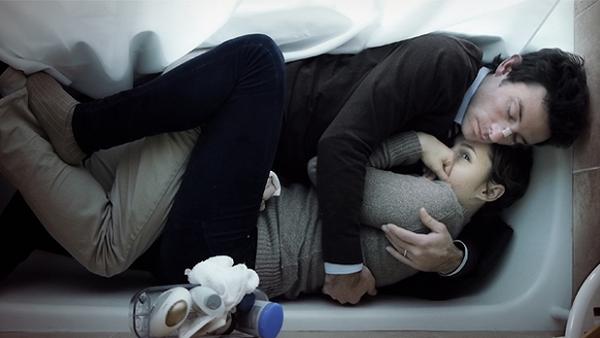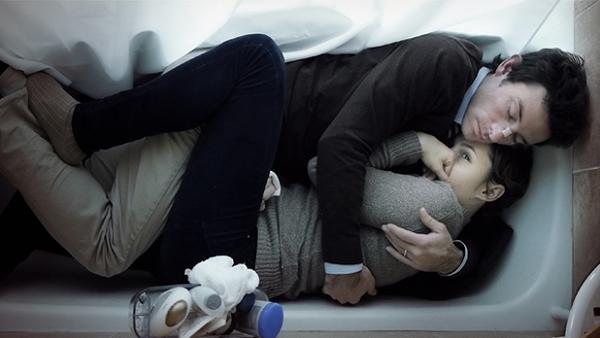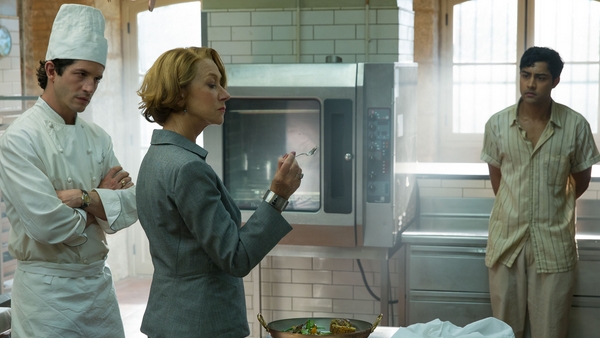
Shane Carruth makes double-edged films. They’re the sort of art-oriented enterprises that utterly thrill me on spiritual, emotional, and intellectual levels, movies that confound, enlighten, dazzle, and bewilder all in equal turn; they’re also frequently cryptic to the point that articulating my feelings on them proves excessively difficult. Put more simply, Carruth’s cinema wows me and I can’t easily convey why, which puts me in a difficult position as somebody whose purpose is to distill his feelings on the movies he watches into precise essays measuring between eight to nine paragraphs in length. As a cinephile, filmmakers like Carruth validate my love for the medium; as a writer and critic, they make me weep upon my keyboard.
Carruth’s sophomore effort, Upstream Color, arrives nearly a decade after he made his debut in 2004 with his convoluted, intricate time-travel picture, Primer, a film that today remains a controversial masterpiece. Unlike Primer, though, Upstream Color doesn’t require viewers to use maps or charts to understand where its plot begins and ends; comparatively, it’s accessible, though only in the way that Terrence Malick’s earlier films are more accessible than his more recent films. That is to say that Carruth has made Upstream Color willfully oblique and elliptical, a tone poem about spirituality, human relationships, and the interconnection of all natural life whose plot defies efficient summation. There’s no nutshell on this Earth which Upstream Color can be easily fit into.
Try this on for size. A man, dubbed only as the Thief, harvests grubs from the soil of special orchid plants. He then does one of two things: he either makes them into tea or slips them into gel caps. People who drink the tea enjoy a brief period of shared consciousness, performing synchronized movements akin to abstract dance routines while under its sway. Those who consume the pills, however, become host to the grubs as they grow into worms, whose presence in their biology renders them frighteningly vulnerable to compulsion- at which point the Thief effortlessly persuades them to sign their houses away and empty their bank accounts to the last penny, profiting off of their ruin in the process.
And so Upstream Color begins, though that synopsis does little justice to what unfolds after the passing of its first fifteen minutes. It is an accurate representation of the rampant cryptic weirdness that defines the rest of the film’s plot, and fair warning to those who cannot watch cinema that conveys narrative through imagery alone rather than doing so in tandem with dialogue. For clarification’s sake: you must watch Upstream Color very, very carefully, because missing even a moment’s worth of visual data can upset a person’s entire interpretation of the film’s events. (Perhaps this explains Carruth’s decision to release the film in theaters, through VOD services, and on Blu-Ray almost simultaneously. At the time of this writing, Upstream Color can even be viewed through Netflix Instant, which is good because rewatches and rewinds are almost necessary.)
The meat of Upstream Color‘s plot finds its origins in that previously described cycle and scam, which the Thief eventually perpetrates upon a young woman named Kris (Amy Seimetz). He robs her blind with her own signature and leaves her jobless with nothing to her name; mercifully, she’s broken out of his spell by a mysterious man called the Sampler, who draws the mind control worms out of her using low sonic frequencies and then places them into a pig. (Really.) His act of goodwill rescinds the worm’s influence over Kris, but- well-intentioned or not- nonetheless leaves her shattered and destitute until time passes and she begins a relationship with Jeff (Carruth himself), a with his own baggage who appears to have been similarly affected.

Their romance, tentative at first and then tangled and honest as the film carries them forward, morphs Upstream Color into an examination of relationships born out of trauma. At its core, Carruth’s non-traditional yarn focuses on two people drifting toward each other to find comfort and assuage themselves of their spiritual pain; alone they’re aimlessly adrift, but together Kris and Jeff have a chance at healing their wounds and moving past the upheavals of their respective lives. Except that they can’t, because no matter how hard they try, their memories and emotions meld together and become hopelessly enmeshed, keeping them mired in their joint distress. It’s impossible for them to move on.
And all the while Carruth cuts away from the main action to side characters and incidents in nature to emphasize his point, which may be best discovered on one’s own. Indeed, unpacking Upstream Color, drilling down to its most essential meaning, is one of the great joys of watching the film progress; it’s a dazzlingly obtuse picture that richly rewards anyone willing to give it the attention it so quietly requests. The best way to experience Carruth’s film is with an open mind- don’t worry about forcing Upstream Color to make sense, and instead sit back, relax, and allow this impeccably shot, perfectly edited, hauntingly scored work of art- which may be the best-crafted release of this year- to wash over you.
Upstream Color is a movie that’s meant to be absorbed rather than understood. Not that understanding is a secondary or even tertiary goal or something that’s completely elusive, but Carruth doesn’t have the sort of pretentious bearing that demands viewers pore over every second of every frame their first time through. The film’s nuances reveal themselves to the patient observer; no one can force the substance out of those details. It must be finessed. Upstream Color exemplifies grace in its story elements and technical flourishes, and for viewers who return that grace in kind, Carruth’s tale will linger and resonate with them for countless repeat screenings to come. (Just don’t forget to bring your copy of Walden.)




5 Comments
Dan Fogarty
Wow. First off, I didn’t even realize this was on Netflix already, so thanks! I’m gonna have to check it out. Sorry to confess to skimming only (policy), but seeing the solid 4s is impressive incentive!! Thanks again Andy.
Thanks again Andy.
Andrew Crump
I didn’t actually realize that, either, until I ran across some discussion about the film on the CHUD forums. Soon as I heard that, I went right to Instant and watched this. And a couple days later, I watched it again. Really, really great, though I am sure there will be some people who find it too elliptical or who prefer Primer.
Thanks for stopping in, Dan, and I hope you dig it as much as I did!
Dan Fogarty
I’ll be sure to let you know!
Norm Schrager
It’s everywhere because they’re self-distributing. It’s also on DVD and Blu-ray at Best Buy. And theaters. And iTunes. They know how to do it!
Andrew Crump
Yeah, Shane went all out here – the film was available on Blu-Ray and on-demand services the same day it hit theaters (or at least really close to then), and hit iTunes not long after. I’m really curious to see how that works out for him; not that Carruth makes expensive movies and not that Upstream Color should strictly be seen as product, but if he made bank on this, I wonder if other filmmakers will follow his lead.